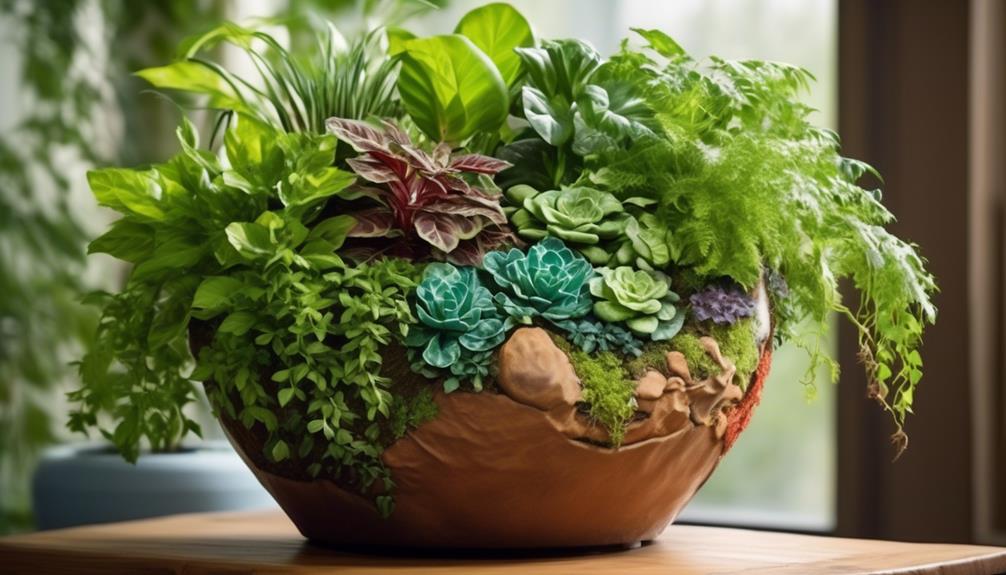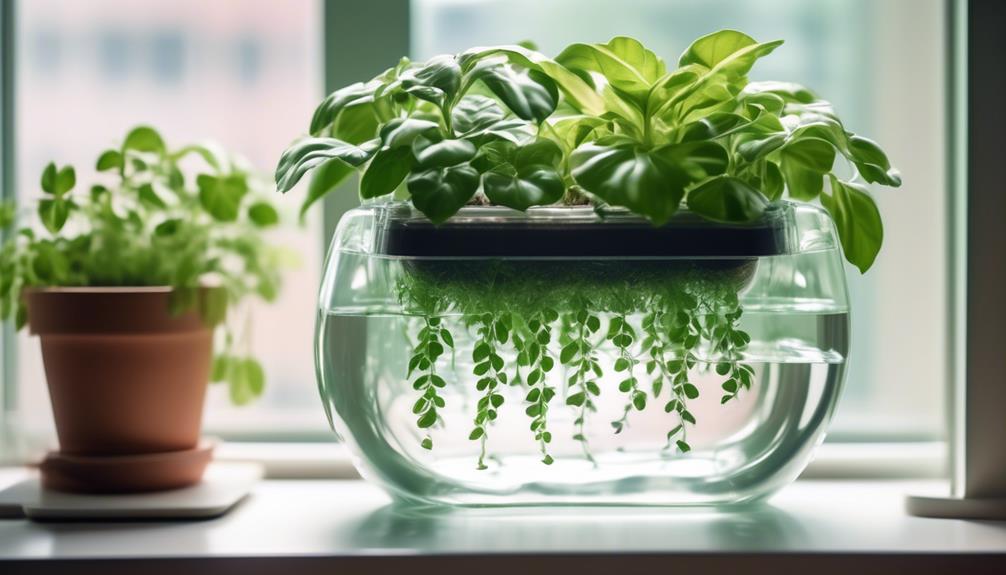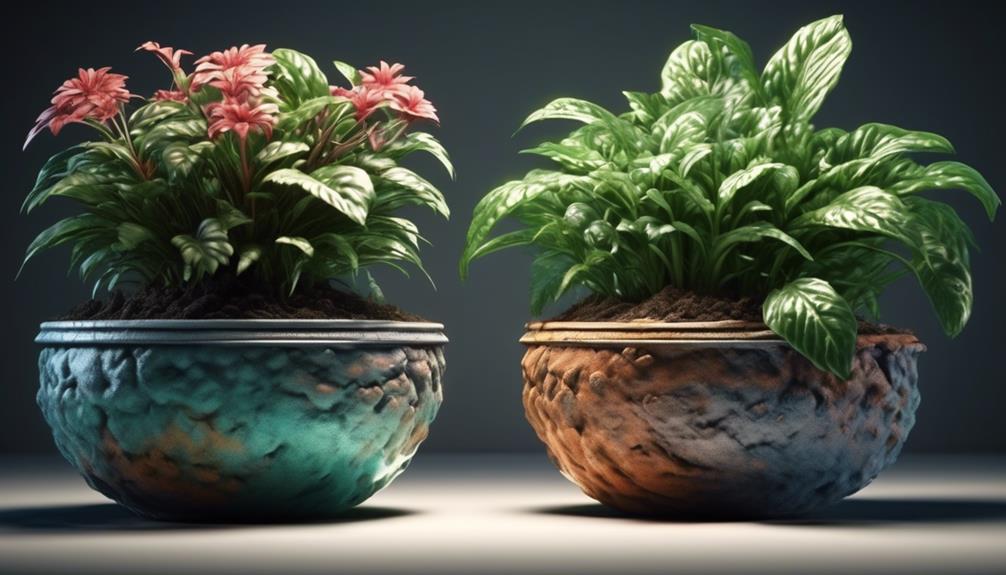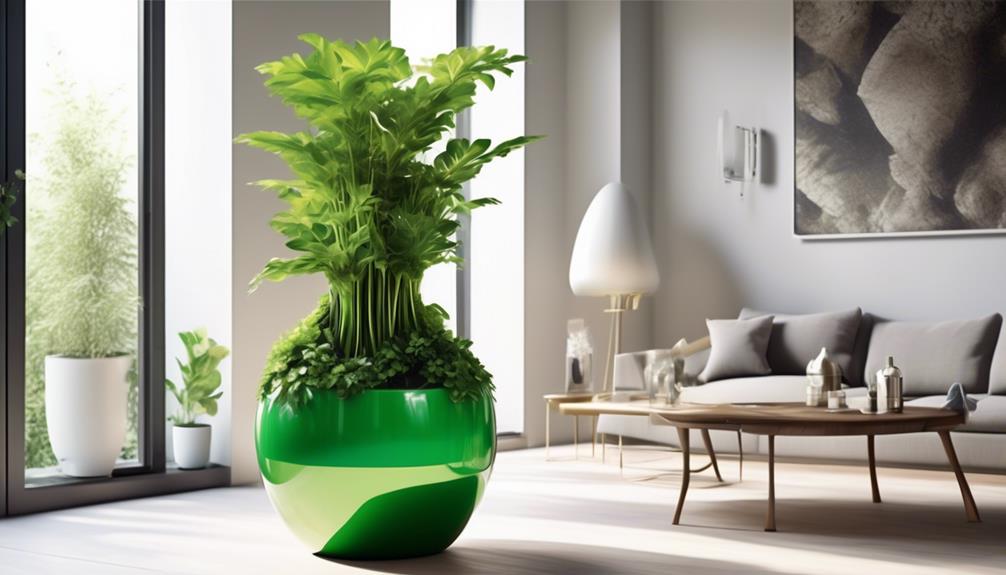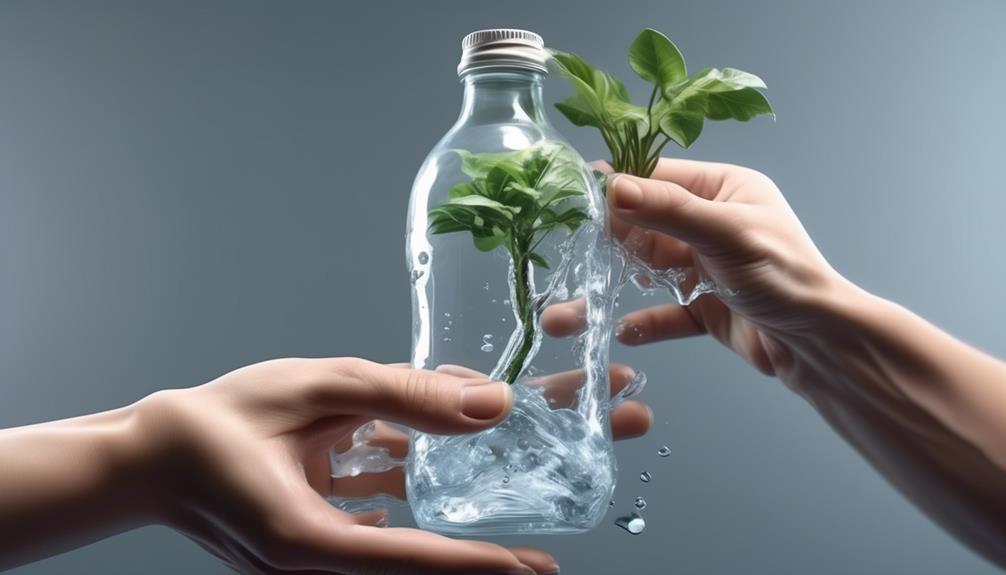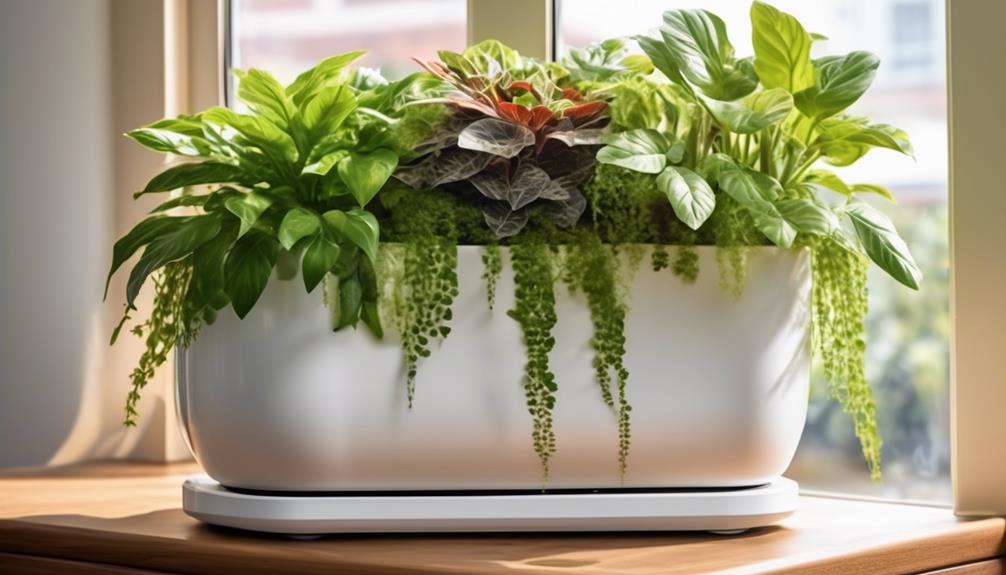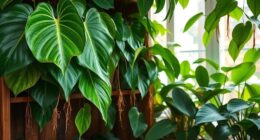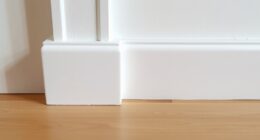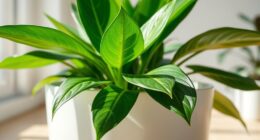Have you ever stopped to consider the true longevity of these contemporary gardening pots that water themselves? They are a symbol of a garden that is well taken care of, showcasing how simple and efficient it can be to nurture plants. But are they built to last?
As we explore the lifespan of self-watering pots, we'll uncover the factors that contribute to their longevity and share insights on how to maximize their usefulness.
Join us as we unravel the mystery behind the durability of these modern plant companions and discover practical tips for ensuring their extended functionality.
Key Takeaways
- The lifespan of self-watering pots can be affected by factors such as material quality, exposure to sunlight, temperature fluctuations, and moisture levels.
- Regular maintenance practices, such as cleaning the pot, checking and maintaining the wicking system, and inspecting and replacing wicking material, can help extend the lifespan of self-watering pots.
- Choosing high-quality components, such as durable plastics, corrosion-resistant metals, and porous ceramics, can contribute to the longevity of self-watering pots.
- Environmental factors and new technologies, such as weather-resistant materials, advanced water regulation systems, smart sensors, and automated irrigation systems, can further enhance the lifespan and functionality of self-watering pots.
Understanding Self-Watering Pot Lifespan
Self-watering pots typically last for several years, but their lifespan can be influenced by various factors such as the quality of materials used, maintenance practices, and environmental conditions.
When it comes to the watering frequency, self-watering pots are designed to provide a consistent moisture level to the plants. The frequency of watering largely depends on the type of plants being grown and the environmental conditions.
It's essential to monitor the soil moisture regularly to ensure that the self-watering system is functioning optimally. The soil should be kept consistently moist but not waterlogged to prevent root rot.
Factors such as temperature and humidity levels also play a crucial role in determining the watering frequency. Understanding the moisture needs of the specific plants being grown is paramount.
Factors Affecting Pot Longevity
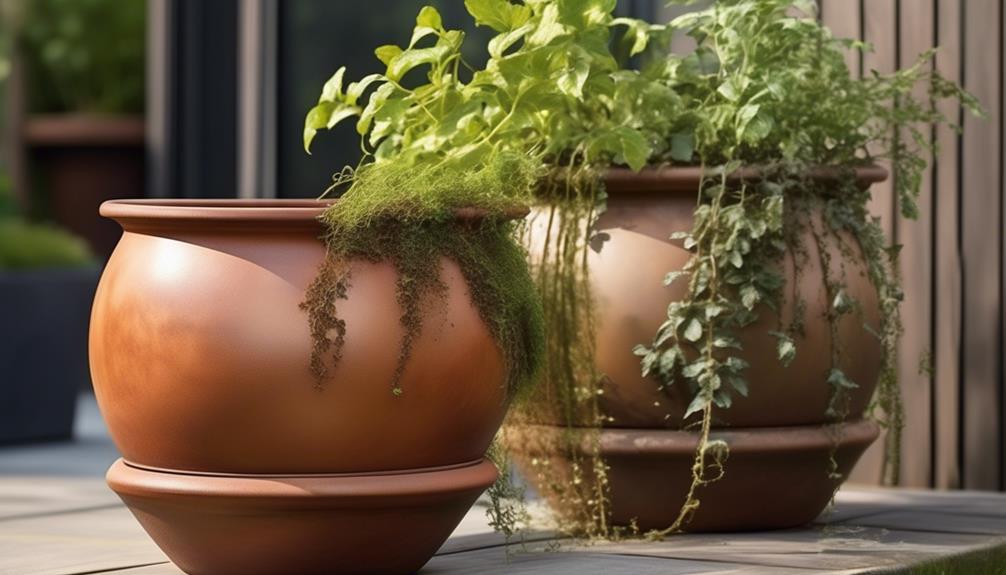
Factors influencing the longevity of self-watering pots include the quality of the materials used, maintenance practices, and environmental conditions. When considering factors affecting pot design, it's important to look at the overall construction and durability of the materials. High-quality, UV-stabilized plastic or resin pots are more likely to withstand environmental stressors and last longer than lower quality materials. Additionally, the design of the pot itself can impact its longevity. Pots with efficient water distribution systems and proper drainage are more likely to maintain their functionality over time.
Environmental impact is another crucial factor. Exposure to extreme temperatures, sunlight, and moisture levels can all influence the lifespan of self-watering pots. Prolonged exposure to harsh environmental conditions can degrade the materials and affect the pot's ability to self-regulate water usage effectively.
Maintenance frequency also plays a significant role. Regular cleaning, inspection, and replacement of any worn-out parts can contribute to the longevity of self-watering pots. Neglecting maintenance can lead to clogging, malfunctioning, and ultimately, a shortened lifespan for the pot.
Furthermore, water usage can impact the longevity of self-watering pots. Over-watering or under-watering can lead to stress on the pot materials and affect its overall lifespan.
Choosing Quality Self-Watering Pots
When selecting a self-watering pot, it's crucial to consider the material it's made from, as this will greatly impact its longevity and durability. Different materials have varying levels of resistance to wear and tear, as well as to the elements.
Understanding these material differences will help us make informed decisions when choosing a quality self-watering pot.
Pot Material Matters
Selecting a self-watering pot made from durable and non-porous materials is crucial for ensuring long-term effectiveness and plant health. The pot design and watering mechanism rely heavily on the material used in its construction.
Opt for high-quality plastic, ceramic, or metal pots to prevent water evaporation and maintain a consistent soil moisture level. These materials are non-porous, reducing the risk of mold, mildew, and bacterial growth. Additionally, they provide better insulation, protecting the roots from temperature fluctuations.
Plastic self-watering pots are lightweight, affordable, and easy to move, while ceramic pots offer aesthetic appeal and durability. Metal pots are sturdy and can withstand harsh weather conditions.
Prioritize pots made from these materials to ensure the longevity and optimal functioning of your self-watering system.
Longevity and Durability
We prioritize self-watering pots made from high-quality, durable, and non-porous materials to ensure longevity and optimal functioning of the system.
Quality materials such as UV-stabilized polypropylene or ceramic not only resist cracking and fading but also prevent water evaporation and excessive moisture loss, promoting the longevity of the pot.
Additionally, a durable pot can withstand environmental stressors and physical impact, ensuring its structural integrity over time.
When selecting a self-watering pot, consider the construction of the water reservoir and its ability to maintain a consistent water supply to the potting mix.
A well-designed and durable water reservoir will prevent leaks and ensure efficient water delivery to the plant's roots.
Investing in self-watering pots constructed from durable materials is essential for maintaining a healthy and thriving plant.
Maintenance Tips for Prolonged Use
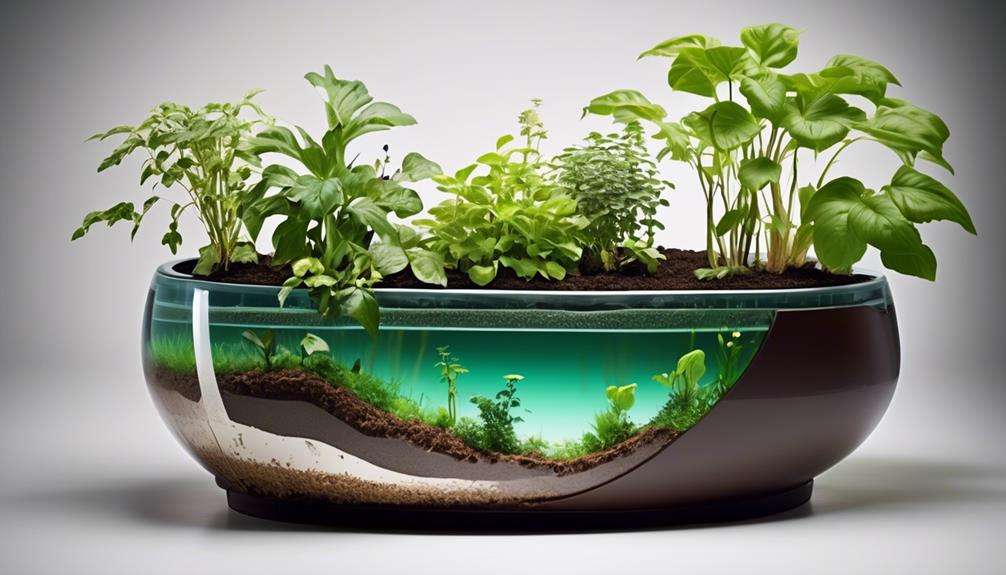
To ensure prolonged use of self-watering pots, regular cleaning and maintenance are essential to prevent clogging and microbial growth. Here are some maintenance tips to help you maximize the lifespan of your self-watering pots:
- Clean the Reservoir Regularly: Over time, algae and mineral deposits can build up in the reservoir, affecting the wicking system and leading to clogs. Clean the reservoir with a mild soap solution and rinse thoroughly to prevent blockages.
- Inspect and Replace Wicks: Check the wicks for any signs of deterioration or blockages. Replace them if they appear worn out or clogged to ensure proper water distribution to the soil.
- Monitor Soil Moisture Levels: Regularly check the soil moisture to ensure it's within the desired range. Adjust the watering frequency based on the plant's needs and environmental conditions to prevent overwatering or underwatering.
- Prune and Remove Debris: Keep an eye out for any debris or roots that may obstruct the wicking system. Regularly prune roots and remove any debris to maintain uninterrupted water flow.
Signs of Pot Degradation
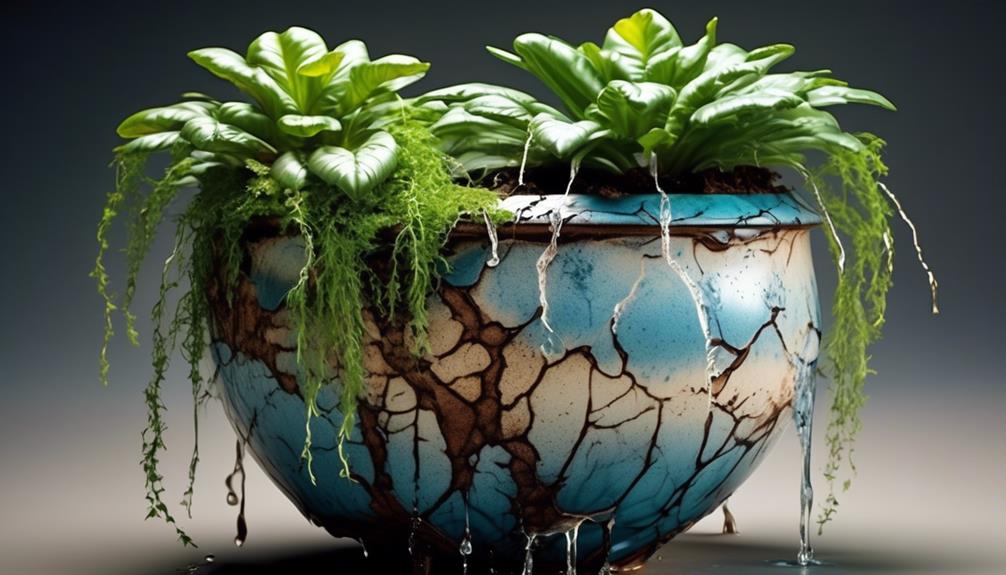
As self-watering pots age, they may show signs of degradation, such as cracks in the plastic or fading color. These are important indicators that the pot may no longer be functioning optimally.
Inspecting the pot regularly for these signs can help us identify when it's time to replace it with a new one.
Cracks in Plastic
Cracks in the plastic of self-watering pots indicate degradation and potential compromise of the pot's structural integrity. To address this issue, it's crucial to consider repairing the cracks, preventing future cracks, assessing the pot's longevity, and selecting appropriate materials to ensure durability.
- Repairing the cracks: Use epoxy or specialized plastic adhesives to mend the cracks effectively.
- Preventing future cracks: Avoid dropping or hitting the pot, and minimize exposure to extreme temperatures to prevent plastic degradation.
- Assessing the pot's longevity: Regularly inspect the pot for any signs of wear and degradation to gauge its remaining lifespan.
- Selecting appropriate materials: Opt for high-quality, UV-stabilized plastics that are designed to withstand outdoor conditions for extended periods.
Fading Color
After addressing the issue of cracks in the plastic, it's important to recognize that fading color on self-watering pots can serve as a visible indicator of pot degradation, signaling the potential need for proactive maintenance and material considerations.
Color preservation is a critical aspect of evaluating the longevity factors of self-watering pots. Exposure to sunlight, moisture, and certain chemicals can lead to color fading, indicating the breakdown of the pot material. UV stabilizers in the plastic composition can help mitigate color fading, thus enhancing the pot's durability. However, over time, these stabilizers may degrade, necessitating a proactive approach to maintain the pot's appearance and structural integrity.
Regularly cleaning and applying UV-resistant coatings can aid in preserving the pot's color, extending its lifespan and maintaining its aesthetic appeal.
Extending Self-Watering Pot Lifespan
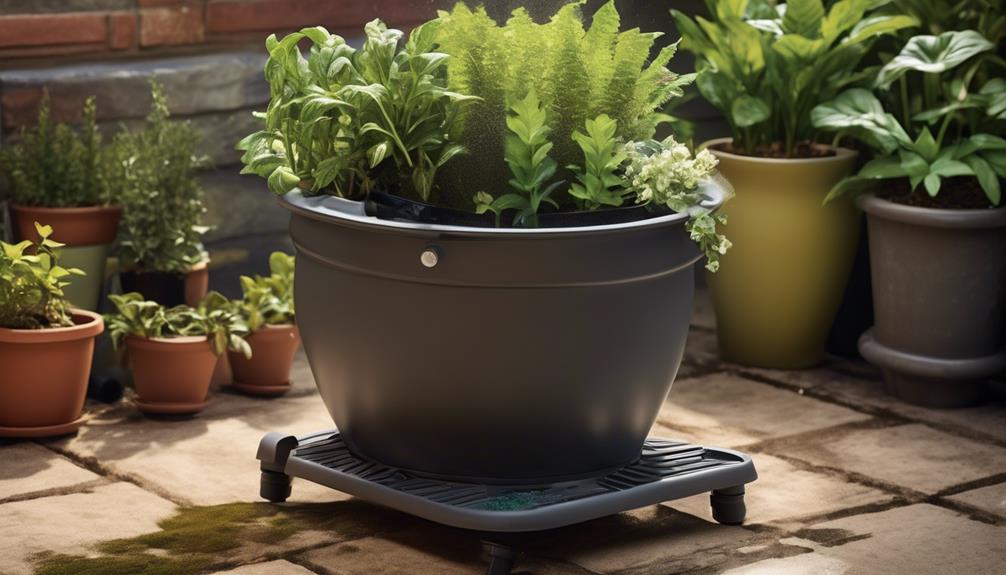
To maximize the lifespan of self-watering pots, it's essential to regularly clean and maintain the wicking system to ensure proper water distribution to the plant's roots. This is crucial for the overall health and longevity of the plants.
In addition to maintaining the wicking system, the following steps can be taken to extend the lifespan of self-watering pots:
- Regular Soil Inspection: Check the soil composition periodically to ensure it remains loose and well-aerated, allowing for proper water and air circulation around the roots.
- Monitor Watering Frequency: Adjust the watering frequency based on the plant's needs and environmental conditions to prevent overwatering or underwatering, which can impact the pot's lifespan.
- Clean the Reservoir: Regularly clean the reservoir and remove any debris or algae that can clog the system and affect water delivery to the plant's roots.
- Inspect and Replace Wicking Material: Inspect the wicking material for any signs of wear or blockage, and replace it if necessary to maintain efficient water distribution.
Repurposing Old Self-Watering Pots
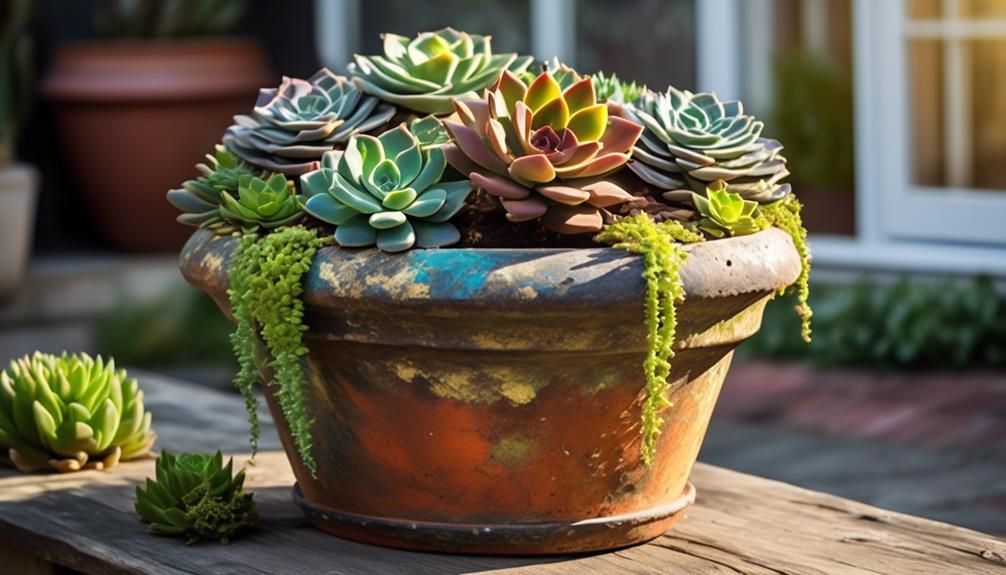
When considering repurposing old self-watering pots, it's essential to assess their structural integrity and functional components for potential new uses. Various repurposing options exist for old self-watering pots, providing creative alternatives to their original function.
One creative alternative is to transform old self-watering pots into self-contained herb gardens. By adding a layer of gravel, some soil, and herb plants, the self-watering pot can be repurposed into a compact, low-maintenance herb garden, perfect for small outdoor spaces or kitchen countertops.
Another repurposing option is to convert old self-watering pots into mini pond features for gardens. By sealing any drainage holes and adding water, aquatic plants, and perhaps a small pump or fountain, the self-watering pot can be repurposed into a charming miniature water feature, attracting wildlife and adding visual interest to outdoor spaces.
Additionally, old self-watering pots can be repurposed as storage containers for gardening tools, potting soil, or other outdoor supplies. By repurposing old self-watering pots in these creative ways, their lifespan can be extended, reducing waste and adding functionality to gardens and outdoor spaces.
Upgrading Self-Watering Pot Components
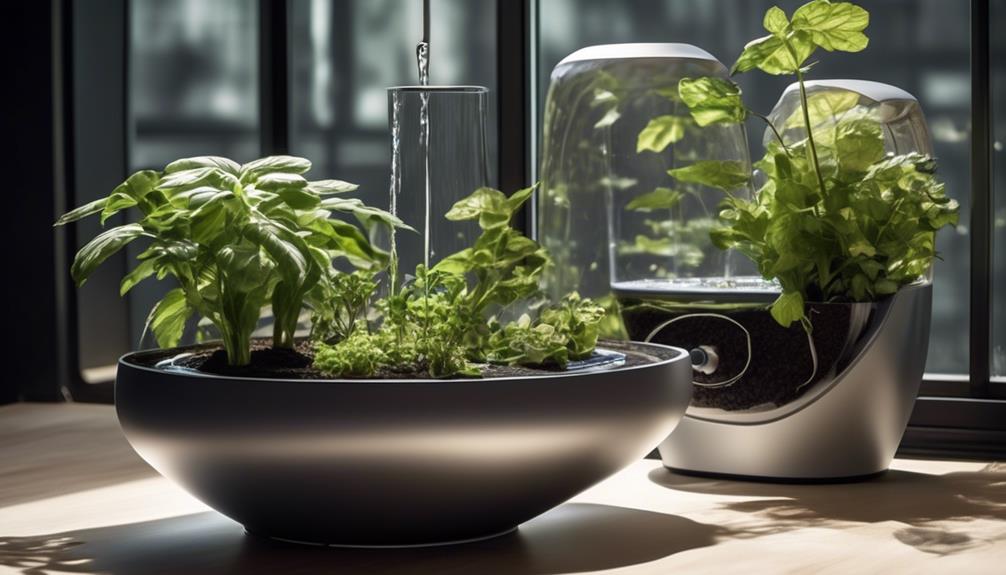
When it comes to upgrading self-watering pot components, it's crucial to consider the materials used, maintenance and cleaning requirements, and the overall lifespan expectations.
The choice of materials for the components can impact the pot's durability and performance, while regular maintenance and cleaning are essential for optimal functionality.
Understanding the lifespan expectations of different components can help in planning for potential upgrades or replacements.
Component Materials
In upgrading self-watering pot components, the choice of materials significantly impacts the pot's durability and performance. When considering material selection, it's crucial to prioritize longevity and functionality to ensure the self-watering pot operates effectively. Here are key materials to consider:
- High-Quality Plastics: Opt for durable, UV-resistant plastics to prevent degradation over time.
- Corrosion-Resistant Metals: Choose metals like stainless steel or aluminum to prevent rust and corrosion, ensuring long-term functionality.
- Porous Ceramics: Utilize high-quality, porous ceramics to facilitate efficient water distribution while maintaining structural integrity.
- Flexible Rubber or Silicone: Incorporate flexible rubber or silicone components to ensure a snug fit and prevent leaks or water evaporation.
Maintenance and Cleaning
To maintain the longevity and effectiveness of self-watering pot components, it's essential to address their maintenance and cleaning requirements, ensuring optimal functionality and durability over time.
Cleaning techniques are crucial for preventing buildup in the watering system. Regularly flushing the reservoir with a mixture of mild soap and water can help prevent mineral deposits and algae growth.
It's also important to inspect and clean the wick or watering mechanism to ensure unobstructed water flow. Additionally, the soil should be replaced periodically to prevent the accumulation of salts and minerals.
Furthermore, checking the condition of the pot's components and replacing any worn-out parts is essential for the continued efficiency of the self-watering system.
Lifespan Expectations
Upgrading self-watering pot components may significantly extend the system's lifespan and improve its overall efficiency. When considering the lifespan factors of self-watering pots, it's important to focus on proper pot maintenance.
Here are some key components to upgrade for maximizing the lifespan of self-watering pots:
- Watering Mechanism: Consider upgrading to a more durable and efficient watering mechanism to ensure consistent water supply to the plants.
- Reservoir Material: Upgrading the reservoir to a high-quality, UV-resistant material can prevent degradation and prolong the pot's lifespan.
- Soil Wicking System: Enhancing the soil wicking system can improve water distribution and uptake, promoting healthier plant growth.
- Aeration System: Upgrading the pot's aeration system can prevent waterlogging and root rot, contributing to the longevity of the plants and the pot itself.
Assessing Pot Lifespan Expectations
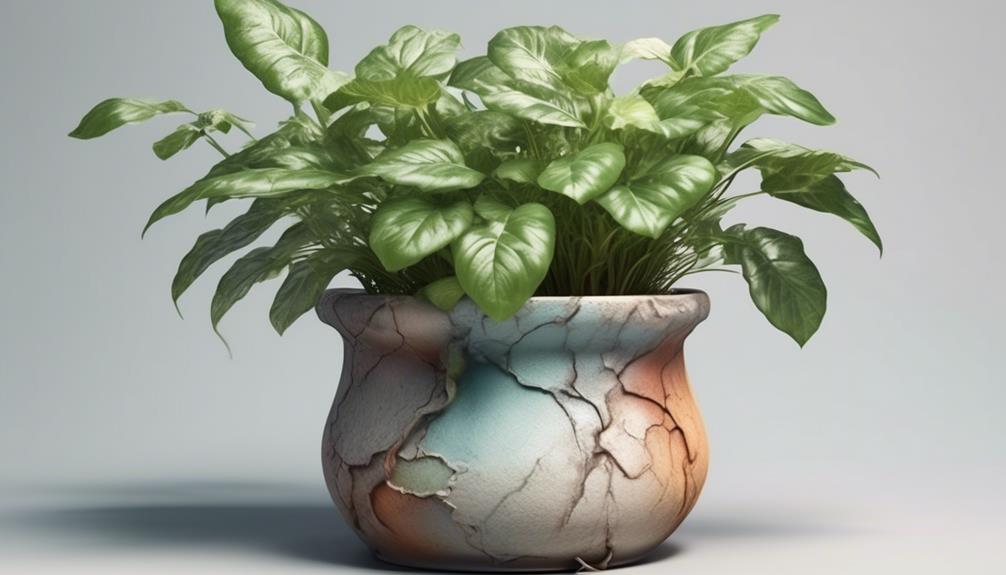
Assessing the lifespan expectations of self-watering pots requires careful consideration of factors such as material durability, environmental conditions, and maintenance practices. When evaluating pot durability, it's essential to assess the quality of the materials used in construction. High-grade plastics, ceramics, and metals typically offer greater longevity compared to lower quality materials.
Factors affecting the lifespan of self-watering pots include exposure to sunlight, temperature fluctuations, and moisture levels. Understanding these longevity factors is crucial for predicting the pot's lifespan and making informed purchasing decisions.
Regular maintenance, such as cleaning the pot, checking the water reservoir, and inspecting for cracks or damage, can significantly extend its lifespan. Additionally, choosing the right pot material can influence its durability. For instance, UV-stabilized plastics are more resistant to sun damage, while glazed ceramics are less prone to moisture-related deterioration.
Conclusion and Next Steps
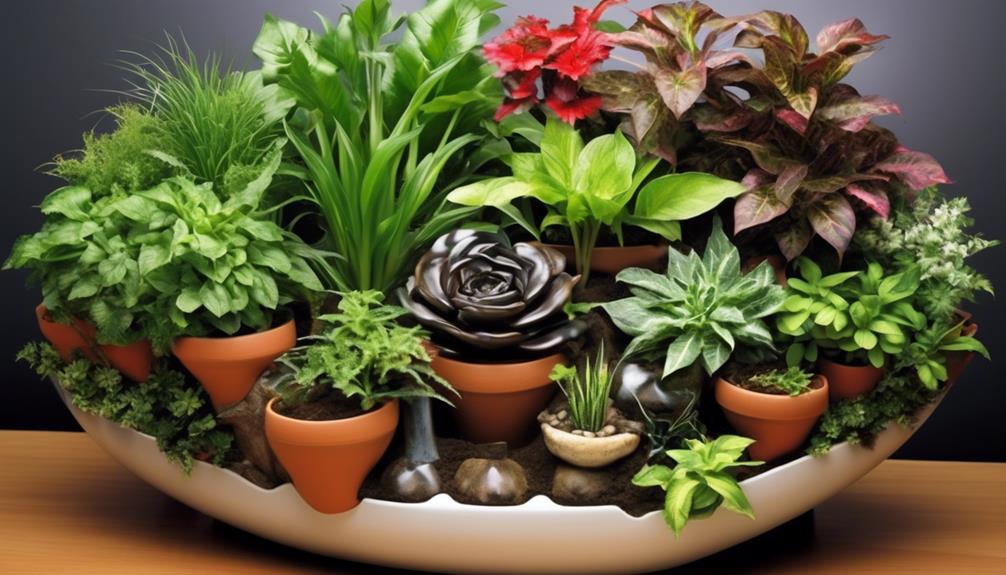
In evaluating the lifespan of self-watering pots, it's essential to consider the factors that influence durability and maintenance practices to ensure long-term functionality. After assessing the expected lifespan of self-watering pots, it's crucial to consider the next steps and future improvements to enhance their longevity and performance.
Next steps for maximizing the lifespan of self-watering pots include:
- Regular Maintenance: Implementing a routine maintenance schedule to clean the pot, inspect the watering system, and ensure proper functioning of all components.
- Monitoring Soil Moisture: Regularly checking the moisture levels in the soil to ensure that the self-watering system is effectively providing the required hydration for the plants.
- Upgrading Materials: Considering the use of durable and UV-resistant materials for the construction of self-watering pots to withstand environmental factors and extend their lifespan.
- Researching New Technologies: Exploring and adopting innovative technologies that can further improve the efficiency and longevity of self-watering pots, such as advanced water regulation systems and self-diagnostic mechanisms.
Frequently Asked Questions
Can Self-Watering Pots Be Used for Both Indoor and Outdoor Plants?
Yes, self-watering pots can be used for both indoor and outdoor plants. They're especially useful for vegetables, fruits, hanging baskets, and window boxes.
The self-watering feature helps maintain consistent moisture levels, making them suitable for various plant types and locations. This technology allows for efficient water delivery and reduces the frequency of watering, making it practical for both indoor and outdoor gardening.
Are There Any Specific Types of Soil or Fertilizer That Should Be Avoided When Using Self-Watering Pots?
When using self-watering pots, it's crucial to avoid specific types of soil and fertilizer. Certain soil types can clog the watering system, while some fertilizers may cause damage.
Additionally, water quality can impact the functionality of self-watering pots. It's best to use well-draining soil and organic fertilizers to ensure optimal performance.
What Are the Best Methods for Cleaning and Sanitizing Self-Watering Pots to Prolong Their Lifespan?
When it comes to maintaining self-watering pots, proper cleaning methods and sanitizing techniques are crucial for prolonging their lifespan.
Regularly cleaning the reservoir and wicking system with a mild soap solution and water can prevent the buildup of algae and mineral deposits.
Sanitizing the pots with a diluted bleach solution or hydrogen peroxide can help control pathogens and prevent the spread of diseases.
These practices contribute to the longevity of self-watering pots.
Can Self-Watering Pots Be Used in Extreme Weather Conditions, Such as Extreme Heat or Cold?
In extreme weather conditions, such as extreme heat or cold, self-watering pots can impact watering frequency and potential damage.
The soil in the pot may dry out faster in extreme heat, requiring more frequent watering.
Conversely, in extreme cold, the water in the pot may freeze, potentially damaging the plant's roots.
It's important to monitor the moisture levels and adjust watering as needed to mitigate any weather-related issues.
Are There Any Special Considerations for Using Self-Watering Pots With Different Types of Plants, Such as Succulents or Herbs?
Choosing the right plants for self watering pots is crucial. Succulents and herbs thrive in these pots due to the consistent moisture levels they provide. This innovative system benefits busy gardeners by reducing watering frequency and maintaining optimal soil moisture.
Understanding the specific water needs of different plant types is essential for successful use. Succulents require less water and well-draining soil, while herbs prefer consistently moist but not waterlogged conditions.
Can I expect the same longevity from wholesale self-watering pots as from individual ones?
Yes, you can expect the same longevity from self watering pots for wholesale as from individual ones. The quality and functionality of the pots remain consistent regardless of the quantity purchased. In fact, wholesale self watering pots are a cost-effective and reliable option for long-term use.
Conclusion
In conclusion, while self-watering pots can last for several years with proper care, it's important to acknowledge that they'll eventually degrade over time.
However, by choosing high-quality pots, performing regular maintenance, and being mindful of signs of degradation, we can maximize their lifespan.
Although it may be difficult to say goodbye to a beloved pot, repurposing old pots or upgrading their components can help us continue to enjoy their benefits for years to come.

